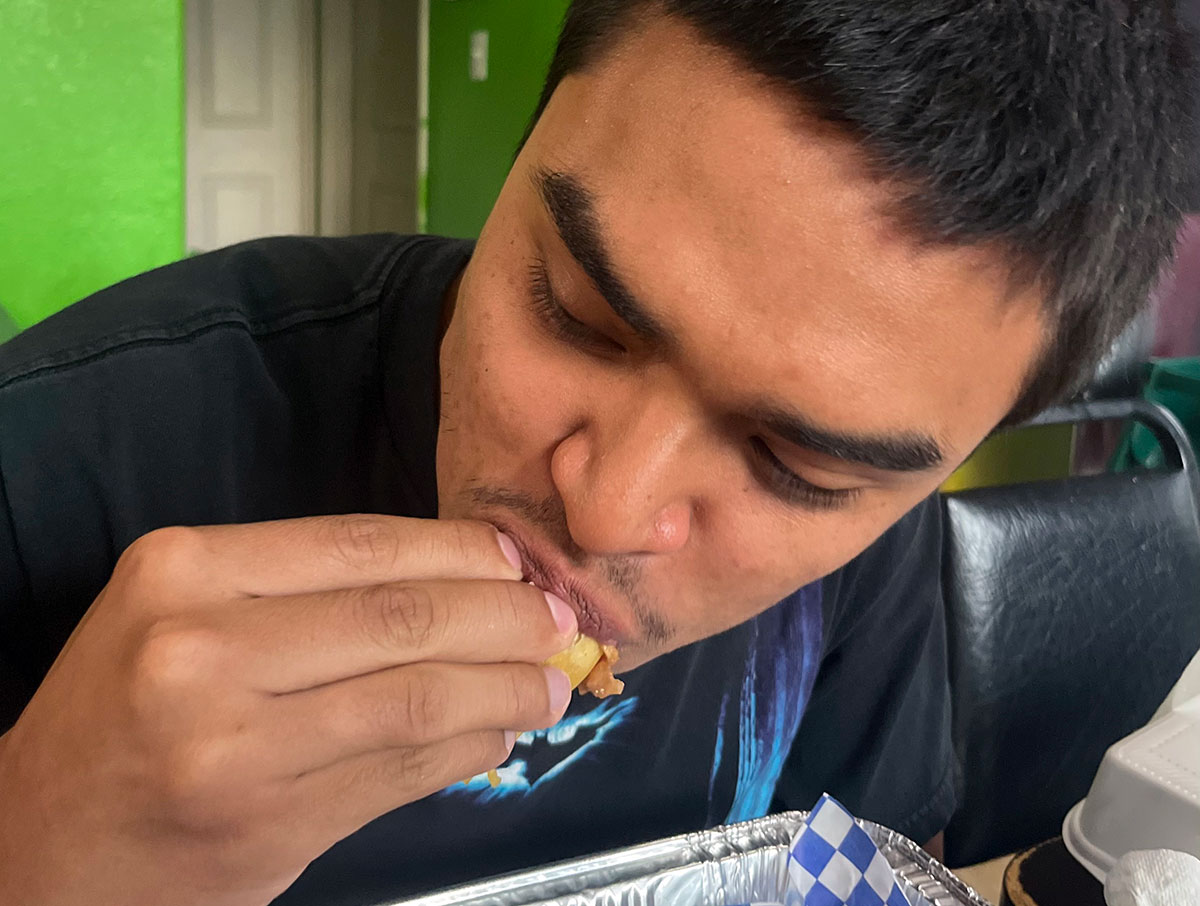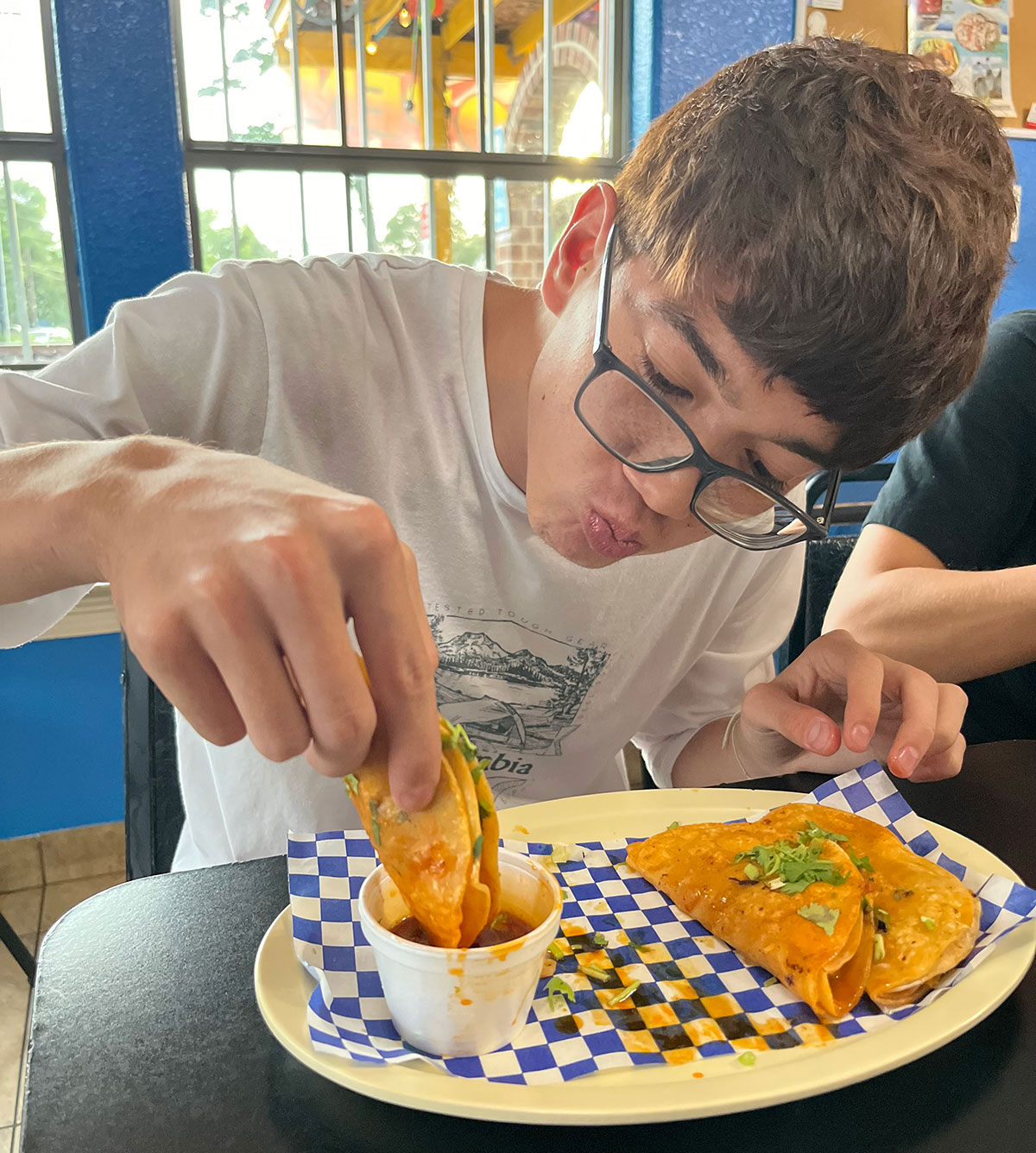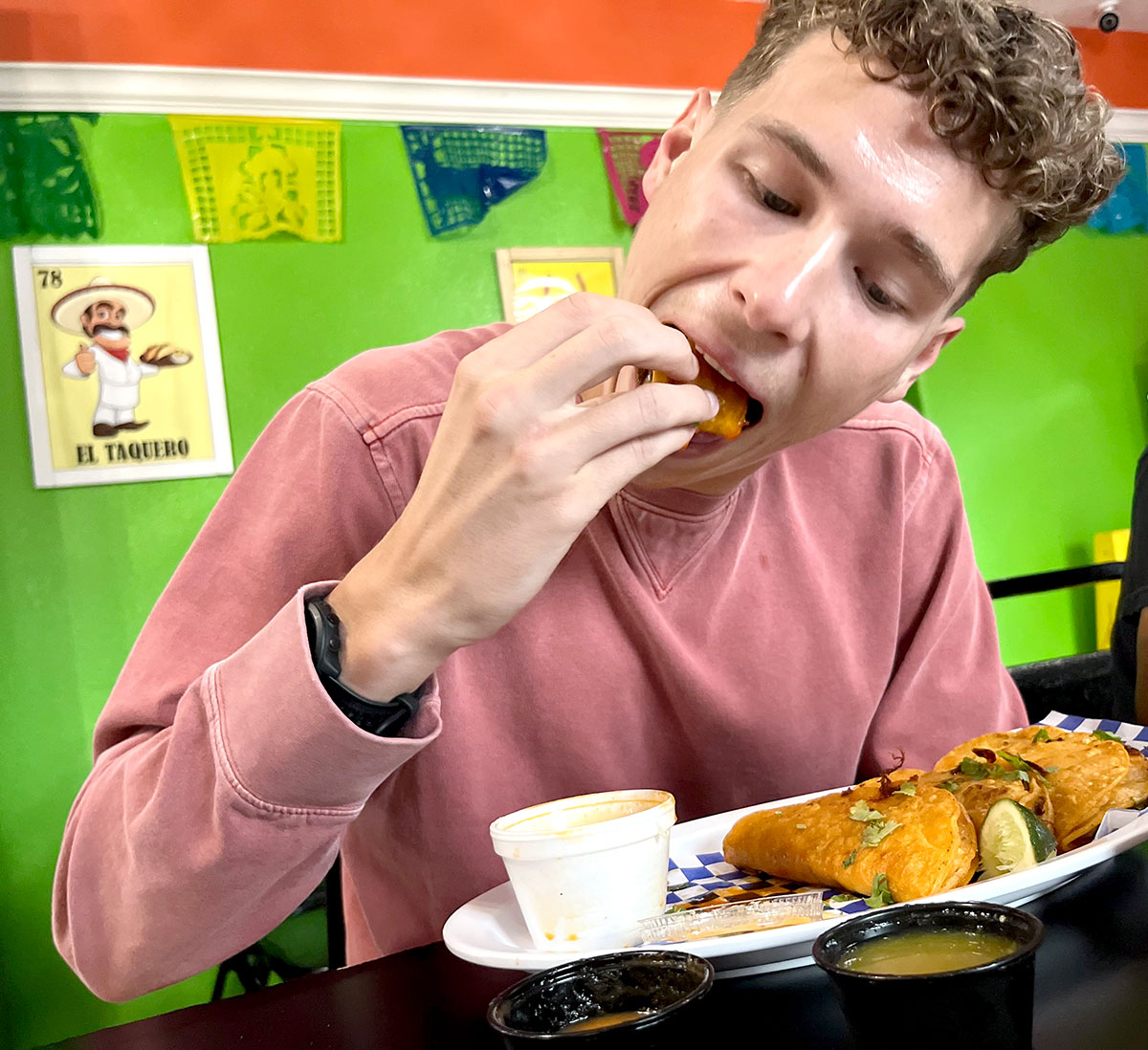
From Taco Tuesdays to Cinco de Mayo street fairs, people always find a great excuse to eat a staple of Mexican cuisine — the taco. The versatility, convenience, and taste all add up to it being one of the most beloved foods across the country.
Ryan Servantes has been around tacos since as long as he can remember. The Mission freshman said that being Hispanic makes him appreciate everything about a taco a lot more than a normal person.
“The culture behind it just makes every bite more meaningful,” he said. “It’s cool knowing that there’s so much history in a taco, and it is one of the most influential foods on the planet. I’ve never had a bad taco.”
Katy June Friesen, writing in a 2017 article for The Smithsonian, said tacos date back to the silver mines 18th century.
“In those mines the word “taco” referred to the little charges they would use to excavate the ore,” Friesen writes. “These were pieces of paper that they would wrap around gunpowder and insert into the holes they carved in the rock face. When you think about it, a chicken taquito with a good hot sauce is really a lot like a stick of dynamite.”

Friesen writes that the first references to the taco as food comes from the end of the 19th century and is called “tacos de minero” — miner’s tacos.”
Dominick Luna’s childhood has been filled with tacos. The Harlingen freshman said the taste of tacos fills him with a feeling of nostalgia. He said the warm feeling doesn’t come from filling up his stomach, but from reminiscing about spending time at his grandma’s house.
“They remind me of my family,” he said. “Throughout my childhood, my grandma would always make tacos from scratch when I was with her. I just remember when she would make corn tortillas with them. It’s one of my best memories from being a kid.”
Geovany Cisneros grew up in a Hispanic household. The Harlingen sophomore said that after doing anything with his dad, he would always come home to cooked tacos.
“It takes me back to home,” Cisneros said. “It is my culture and wherever I went there were always tacos. It especially reminds me of my mom. She makes the best tacos and I’ve never tasted anything better. It means a lot to me and they’re my favorite food.”
Crawford Kiser was not brought up around Mexican food. The Amarillo sophomore said it took a trip to Mexico for his tastebuds to experience a taco for the first time, but when he did, he fell in love.
“The first time I tried tacos was when I took a family vacation to Cancun,” he said. “The second my mouth hit the tortilla I was in love. Now, I like to eat tacos whenever the opportunity comes up. It really did change my life.”
Versatility is what makes the taco iconic. The options seem limitless and with choices like al pastor, birria and carne asada, there is no wrong choice.
Al pastor is pork that is marinated in dried chilies, spices, pineapple and achiote paste. Achiote comes from shrubs that can only be found in Central America. The meat is then cooked vertically, and the outside layer of meat is shaved off.

Illeana Moore, writing for Historical Mexico, said al pastor tacos originjated with Lebanese immigrants fleeing the Ottoman Empire during the 1930s. They brought the taste of Shawarma.
“Some of the Lebanese immigrants opened their own restaurants in which they served the popular Middle Eastern dish,” Moore writes. “During the 1960s in Puebla, the Mexican-born children of these immigrants opened their own restaurants and put a Mexican twist onto the popular Lebanese dish. Lamb was switched out for pork, which was then marinated in a variety of spices and chilies that are popular in Mexican cuisine. The pita bread and/or flour tortilla were then switched out for corn tortillas. At one point, pineapple began to be included to the taco al pastor recipe.”
The taco al pastor made their way into Mexico City during the ’60s and skyrocketed their popularity, Moore writes, making an impact on Mexican culture and tastebuds forever.
Birria is goat meat that is marinated in stock that has vinegar, garlic, cumin, bay leaves, and thyme. When made, it can be dipped into a Mexican broth called consommé.
The website for Vitos Tacos Birrieria, a restaurant based in Las Vegas, states that the meat was introduced to the Mexican area during the 16th century.
“Hernan Cortes and the Spanish conquistadors arrived in the area that would become modern-day Mexico,” the website states. “They brought with them European livestock, including goats. The goats they brought with them soon started reproducing at an alarmingly rapid rate and the Spanish invaders found themselves with more goats than they knew what to do with. The Spanish were said to not enjoy eating goat meat because of its strong, gamey flavor and tough texture. To solve this problem, the Spanish started cooking the goat meat with many spices at low temperature for a long time — and invented birria.”
The meat spread to Tijuana, where street vendors started to serve it in tacos, making it a staple of Mexican cuisine.
Carne asada is beef that is marinated in lime juice, salt, and other Mexican seasonings. It is then grilled and sliced.
Tyler Robinson, a writer on the Backyard Taco blog, writes that carne asada originated in the 16th century.
“Beef became one of the most popular sources of protein across the country,” Robinson writes. “A close relative to the carne asada we know today was created by grilling beef over a fire and then thinly slicing it. The beef would either be eaten by itself or stuffed into a corn tortilla by hungry ranchers. Sometimes, toppings were added — closely resembling the carne asada tacos served today.”
Any of these meats go with corn or flour tortillas perfectly. Adding toppings such as cilantro, guacamole, and salsa take a taco tasting experience to the next level.
However one takes their taco, one thing is certain. Your tastebuds will appreciate the taste of Mexican culture.
